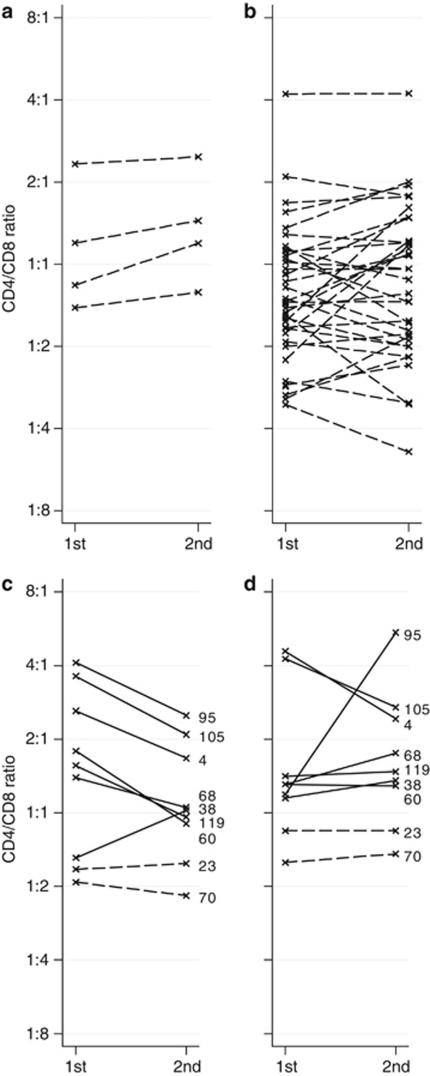Figure 2.
CD4/CD8 changes in sequential samples. Dashed lines represent patients with initially no bone marrow lymphoma involvement and solid lines those with initial involvement. The y scales are logarithmic. (a) Shows how bone marrow CD4/CD8 ratios increased in all four bone marrow-negative patients who progressed to bone marrow involvement. Three of these four patients received rituximab in the meantime, but (b) demonstrates that rituximab therapy did not induce bone-marrow CD4/CD8 changes in patients who retained bone marrows free from lymphoma. (c, d) Show the nine patients with complete sequential samples of bone marrow and blood CD4/CD8 ratios. The numbers represent patient identity. All nine received rituximab between samples. Seven patients (solid lines) cleared their marrows from lymphoma, and six of these also showed decreased bone marrow CD4/CD8 ratios (c), but there was no similar tendency in the comparable blood CD4/CD8 ratios of which two decreased, two were stable and three increased (d).

